In figure,ξ=100V,R1=10Ω,R2=20Ω,R3=30Ω and L=2H. Find i1&i2
(a)imeediately after switch Sw is closed
(b)a long time after
( c)immediately after Sw is opended again
(d)a long time later.
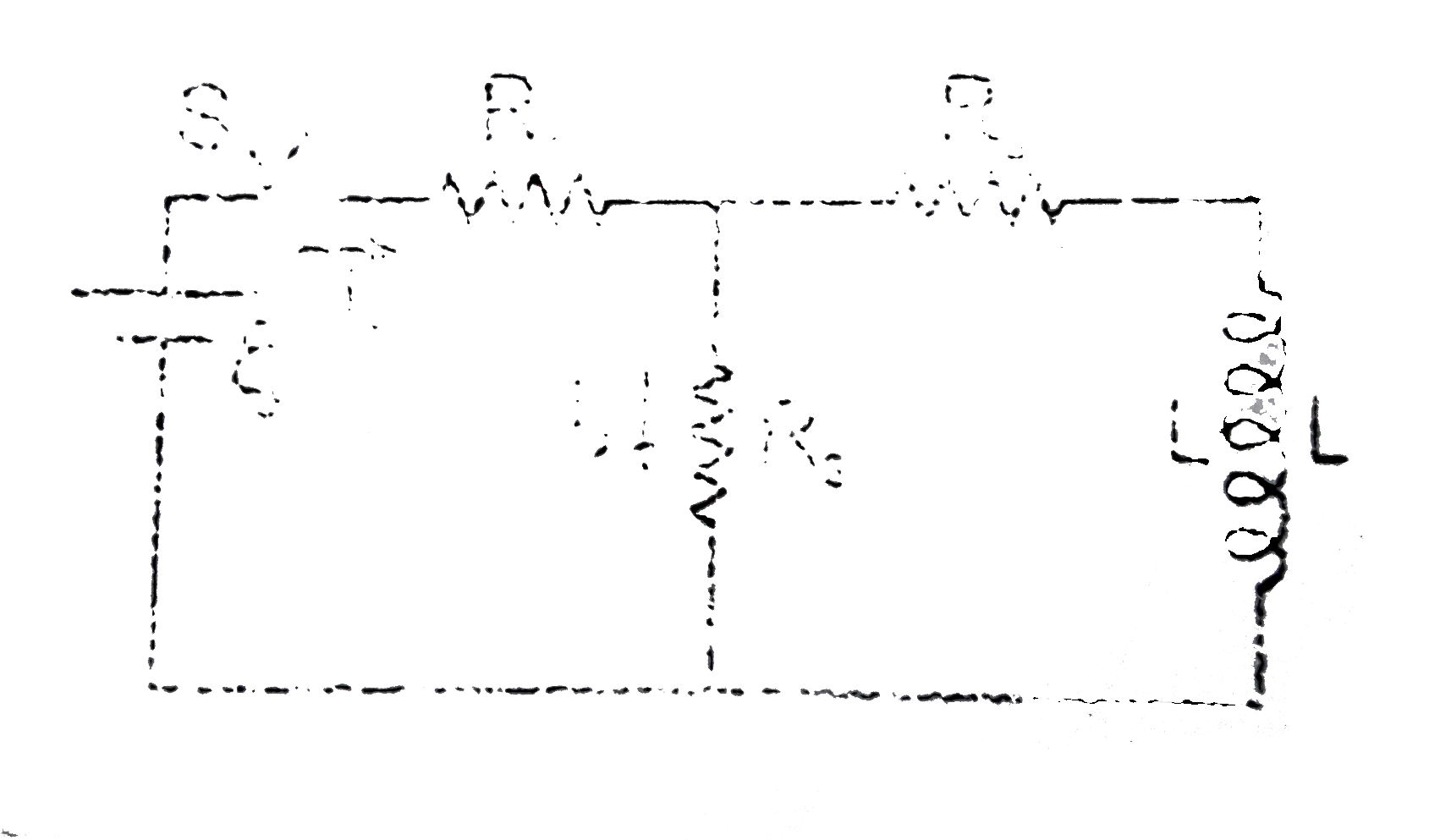
The correct Answer is:A, B, C, D
Step by step video, text & image solution for In figure,xi=100 V,R_(1)=10 Omega,R_(2)=20 Omega, R_(3)=30 Omega and L= 2H. Find i_(1) & i_(2) (a)imeediately after switch S_(w) is closed (b)a long time after ( c)immediately after S_(w) is opended again (d)a long time later. by Physics experts to help you in doubts & scoring excellent marks in Class 12 exams.
Topper's Solved these Questions
- BOOK - RESONANCECHAPTER - ELECTROMAGNETIC INDUCTIONEXERCISE - Exercis-1 PART 251videos
ELECTROMAGNETIC INDUCTION
- BOOK - RESONANCECHAPTER - ELECTROMAGNETIC INDUCTIONEXERCISE - Exercis-2 PART 115videos
ELECTROMAGNETIC INDUCTION
- BOOK - RESONANCECHAPTER - ELECTROMAGNETIC INDUCTIONEXERCISE - Problem12videos
ELECTROMAGNETIC INDUCTION
- BOOK - RESONANCECHAPTER - ELECTRODYNAMICSEXERCISE - Advanced level problems31videos
ELECTRODYNAMICS
- BOOK - RESONANCECHAPTER - ELECTROSTATICSEXERCISE - HLP39videos
ELECTROSTATICS
Similar Questions
For the ciruit shown in figure E=50V, R1=10Ω,R2=20Ω,R3=30Ω and L=2.0mH. Find
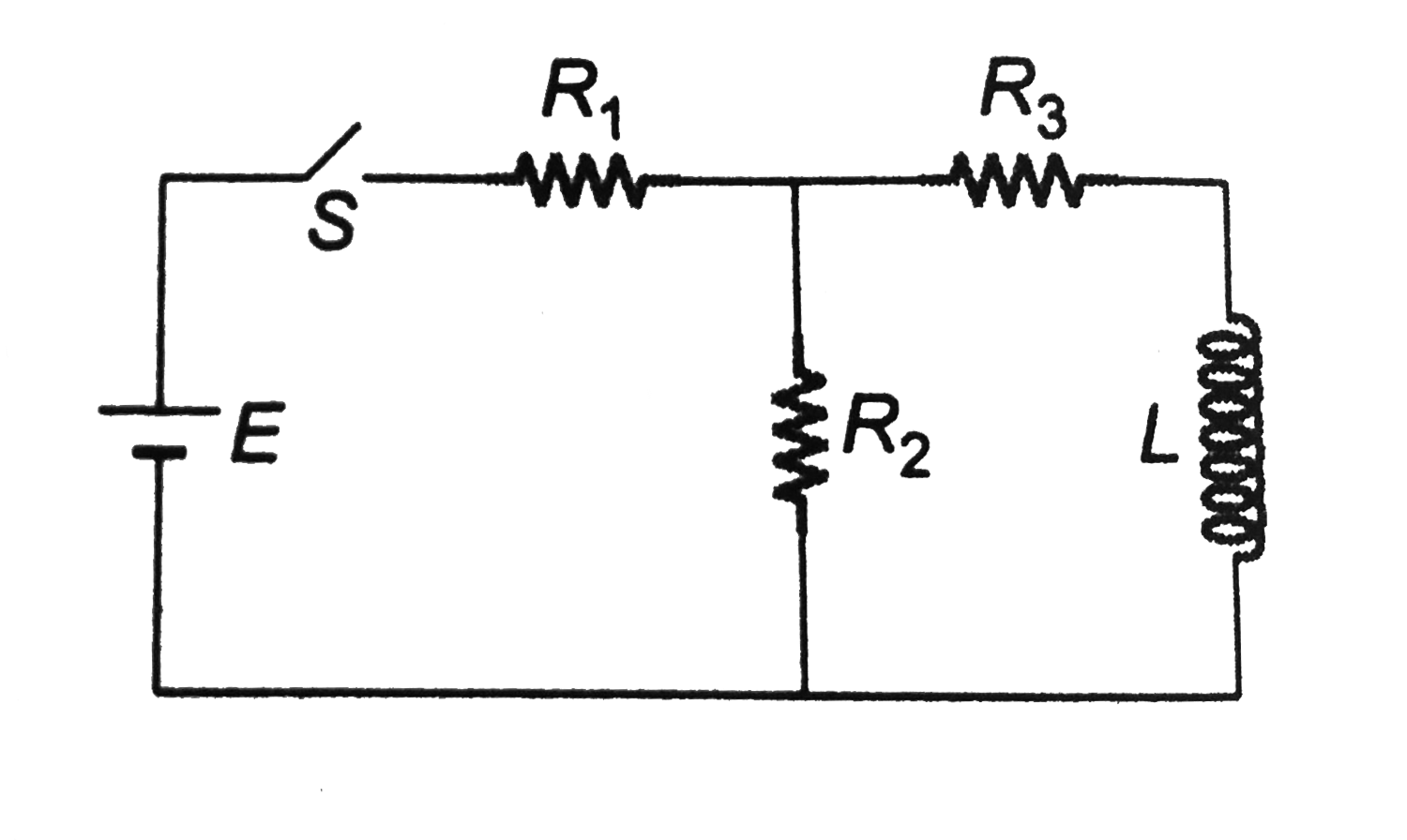
a. Immediately after switch S is closed
b. A long time after S is closed.
c. Immediaately after S is reopened
d. A long time after S is reopened.View SolutionFind the values of i1 and i2
(i) immediately after the switch S is closed.
(ii) long time later, with S closed.
(iii) immediately after S is open.
(iv) long time after S is opned.
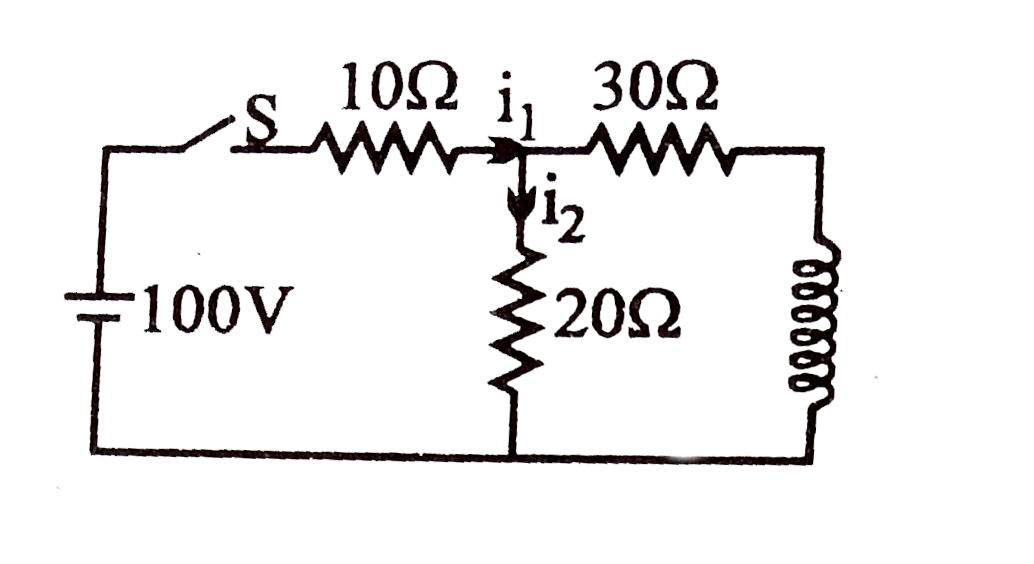 View Solution
View Solution
Knowledge Check
- Question 1 - Select One
In the circuit shown in adjoining fig E =10V, R1=1ΩR2=2Ω,R3=3ΩandL=2H. Calculate the value of current i1,i2andi3 immidiately after key S is closed :-
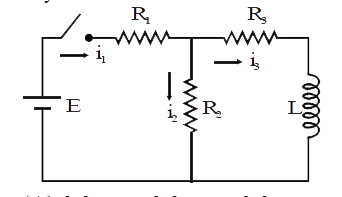 A3.3 amp, 3.3 amp, 3.3 ampB3.3 amp, 3.3 amp, 0 ampC3.3 amp, 0 amp, 0 ampD3.3 amp , 3.3 amp 1.1 amp
A3.3 amp, 3.3 amp, 3.3 ampB3.3 amp, 3.3 amp, 0 ampC3.3 amp, 0 amp, 0 ampD3.3 amp , 3.3 amp 1.1 amp - Question 2 - Select One
In the circuit shows in Fig E=15V, R1=1Ω, R2=1Ω, R3=2Ω, and L=1.5H. The currents flowing through R1,R2,and R3 are i1,i2, and i3, respectively.
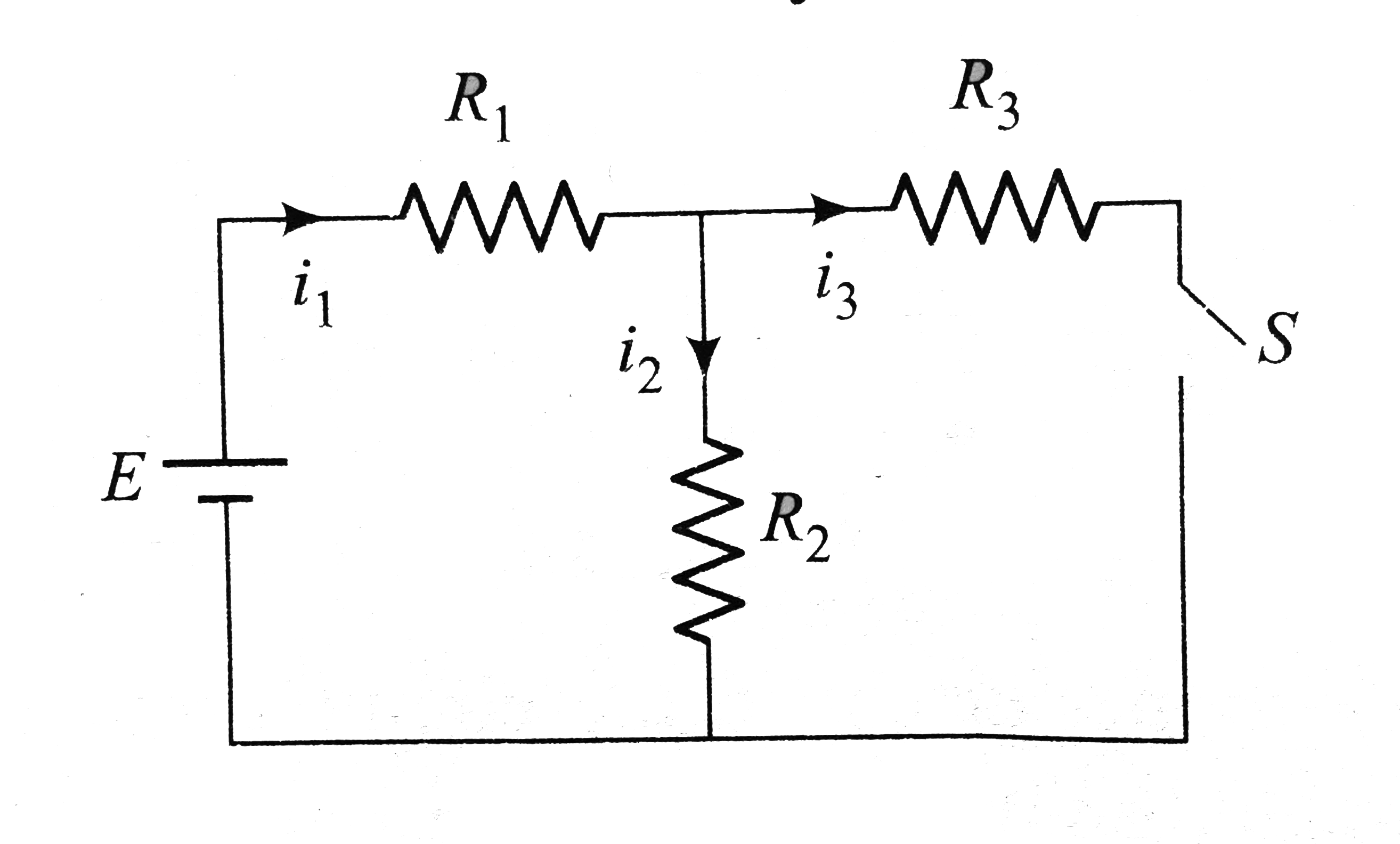
Immediately after connecting switch S,Ai3=0A and di3dt=0As−1Bi3=0A and di3dt≠0As−1Ci3=0A and the rate at which magnetic energy stored is not zeroDNone of these - Question 3 - Select One
In the R1=10Ω,R2=20Ω,R3=40ΩR4=80Ω and VA=5V,VB=10V,Vc=20V,VD=15V The current in the resistance R1 will be
 A0.4A toward OB0.4A away from OC0.8A toward OD0.8A toward O
A0.4A toward OB0.4A away from OC0.8A toward OD0.8A toward O
In the circuits show ε=15V,R1=1Ω,R2=1Ω,R3=2ΩandL=15H . Find the current i1,i2,i3 (i) immediately after the switch is closed (ii) immediately after the opening from the closed position (iii) sufficiently long after , the switch is opened f rom the colsed position,
View SolutionIn Fig. 30-41, E = 100 V, R1=10.0Ω,R2=20.0Ω,R3=31.0Ω , and L = 2.00 H. Immediately after switch S is closed, what are (a) i1 and (b) i2? (Let currents in the indicated directions have positive values and currents in the opposite directions have negative values.) A long time later, what are (c) i1 and (d) i2? The switch is then reopened. Just then, what are (e) i1 and (f) i2? A long time later, what are (g) i1 and (h) i2?
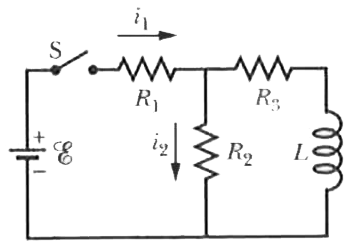 View Solution
View SolutionIn the circuit shown in the figure R1=R2=5Ω,C1=C2=2μfandε1=ε2=5V. Switch S1 is kept closed for a long time. Now switch S2 is also closed. Immediately after S1 is closed, find
(a) current through R1
(b) current through R2
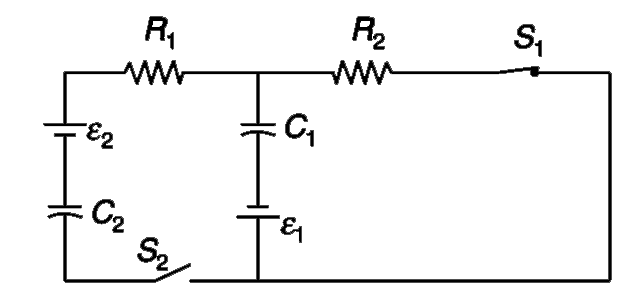 View Solution
View SolutionFor the circuit shown E=50 V R1=10Ω,R2=20Ω,R3=30Ω L = 2.0 mH . The current through R1 and R2 are ________ . And _______ immediate after the switch is closed.
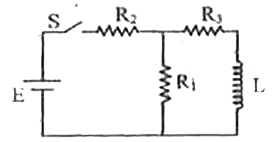 View Solution
View SolutionIn the circuit shown in figure, E=120V,R1=30.0Ω,R2=50.0Ω and L=0.200H. Switch S is closed at t=0. Just after the switch is closed.
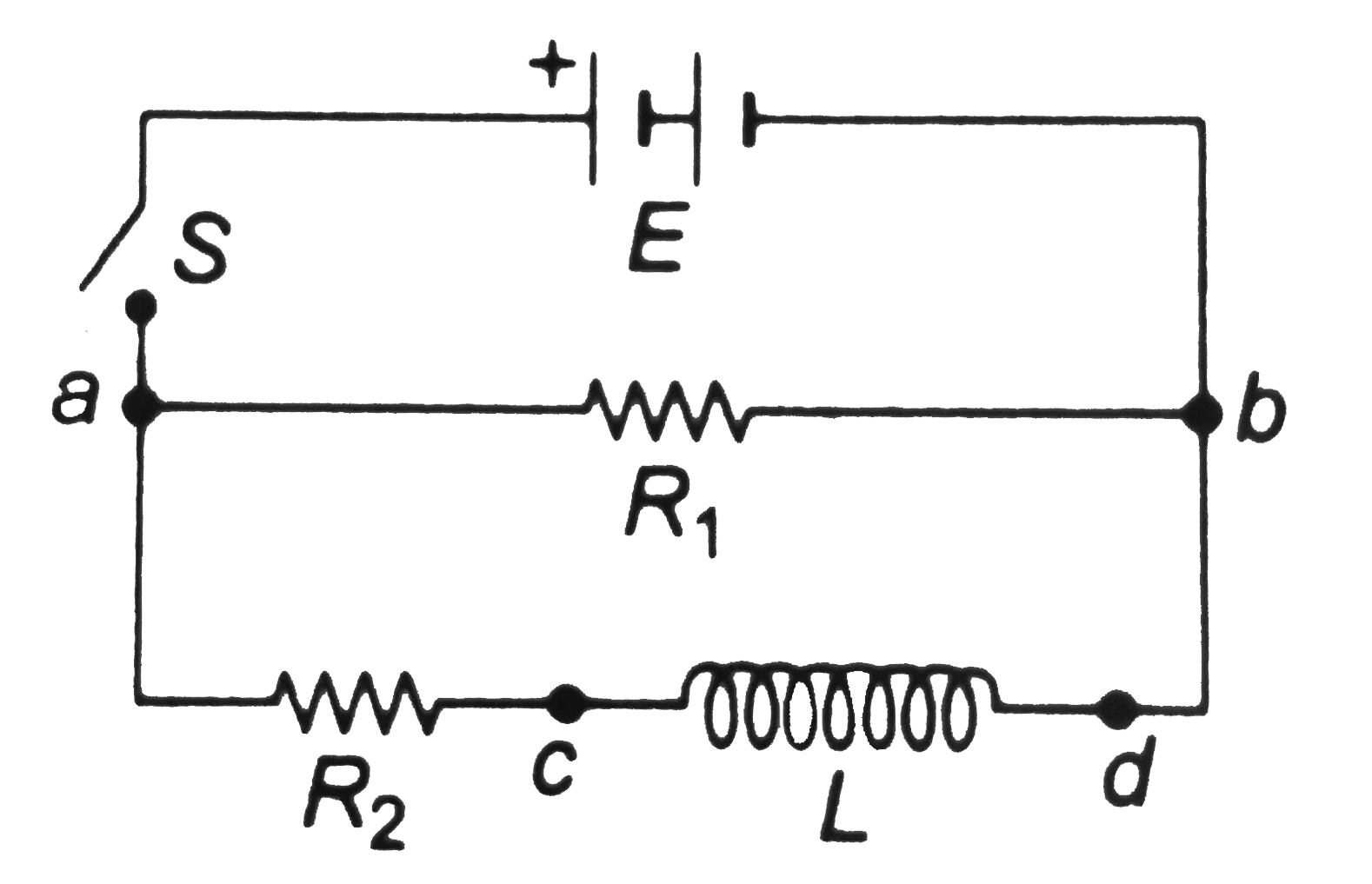
(a) What is the potential difference Vab across the inductor R1?
(b) Which point, a or b, is at higher potential?
(c) What is the potential difference Vcd across the inductor L?
(d) Which point, c or d, is at a higher potential? The switch is left closed for a long time and then is opened. Just after the switch is opened
(e) What is the potential difference Vab across the resistor R1?
(f) Which point a or b, is at a higher potential?
(g) What is the potential difference Vcd across the inductor L?
(h) Which point, c or d, is at a higher potential?View Solution

